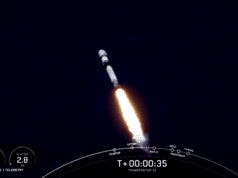
“Our investment in the UAE team of engineers is the most important achievement of EIAST through our flagship satellite, DubaiSat-1, launched in 2009 This reflected the vision of His Highness Sheikh Mohammed Bin Rashid Al Maktoum, UAE Vice President & Prime Minister and Ruler of Dubai, to strengthen the involvement of UAE youth in frontier and advanced sciences. These young engineers and specialists are now more confident and determined to succeed as they work towards the launch of DubaiSat-2, and this is the real achievement of our space programme,” said Ahmed Al Mansoori, Director General, EIAST.
The technical improvements of DubaiSat-2 include an increase in the speed of the data download from 30 Mbit / second, as is the case in DubaiSat-1, up to 160 Mbit / second, in addition to increasing the amount of data acquired by the satellite per day from 12,000 square metres to 17,000 square metres. With these technical improvements, the weight of the satellite is now 300 kg and its size is two metres in height and 1.5 metres wide.
The orbital height of the satellite has been modified to 600 km above the earth’s surface compared to 690 km, which is the current orbit of DubaiSat-1. The orbit has also been changed from an ascending obit (South to North) to a descending orbit (North to South), which will allow both satellites to work well in constellation as well as give better coverage over the UAE area.
Among other significant improvements, the UAE team along with their South Korean Partners (Satrec Initiative) has designed the satellite to produce higher quality images of the world. The satellite will have a panchromatic resolution of 1m and a multispectral resolution in of 4m in four spectral bands (Red, Green, Blue and Near Infrared). This would enhance the quality of the images for various applications including environmental projects, urban planning, infrastructure, telecommunications and electricity.
Source: EIAST




